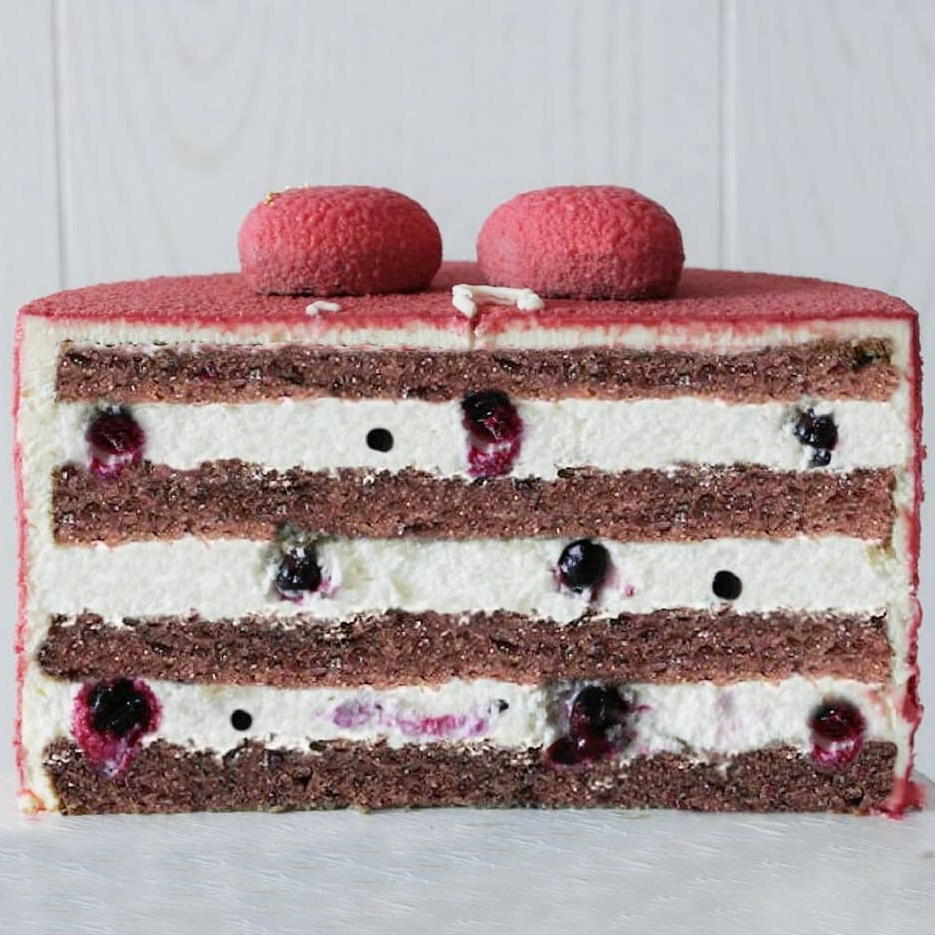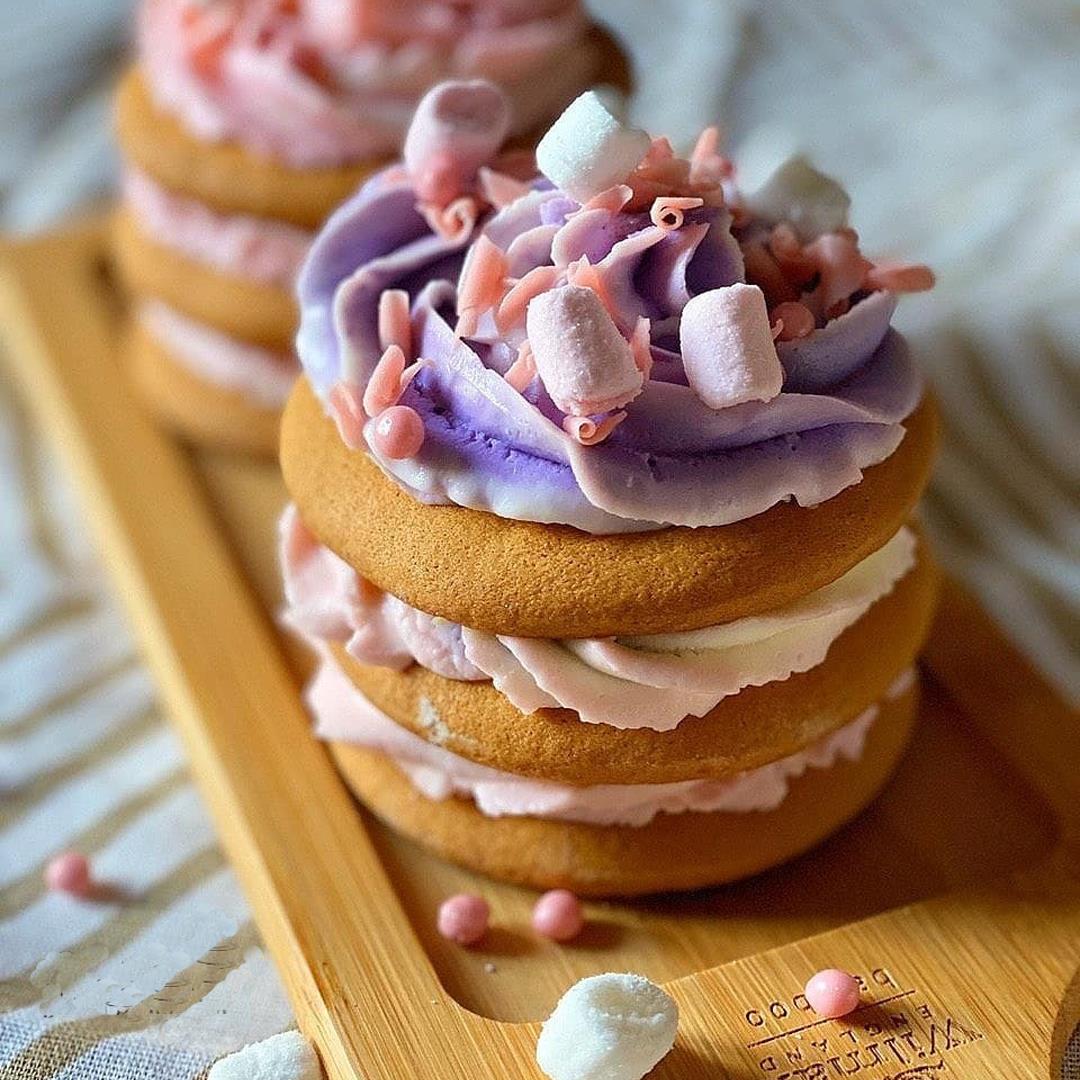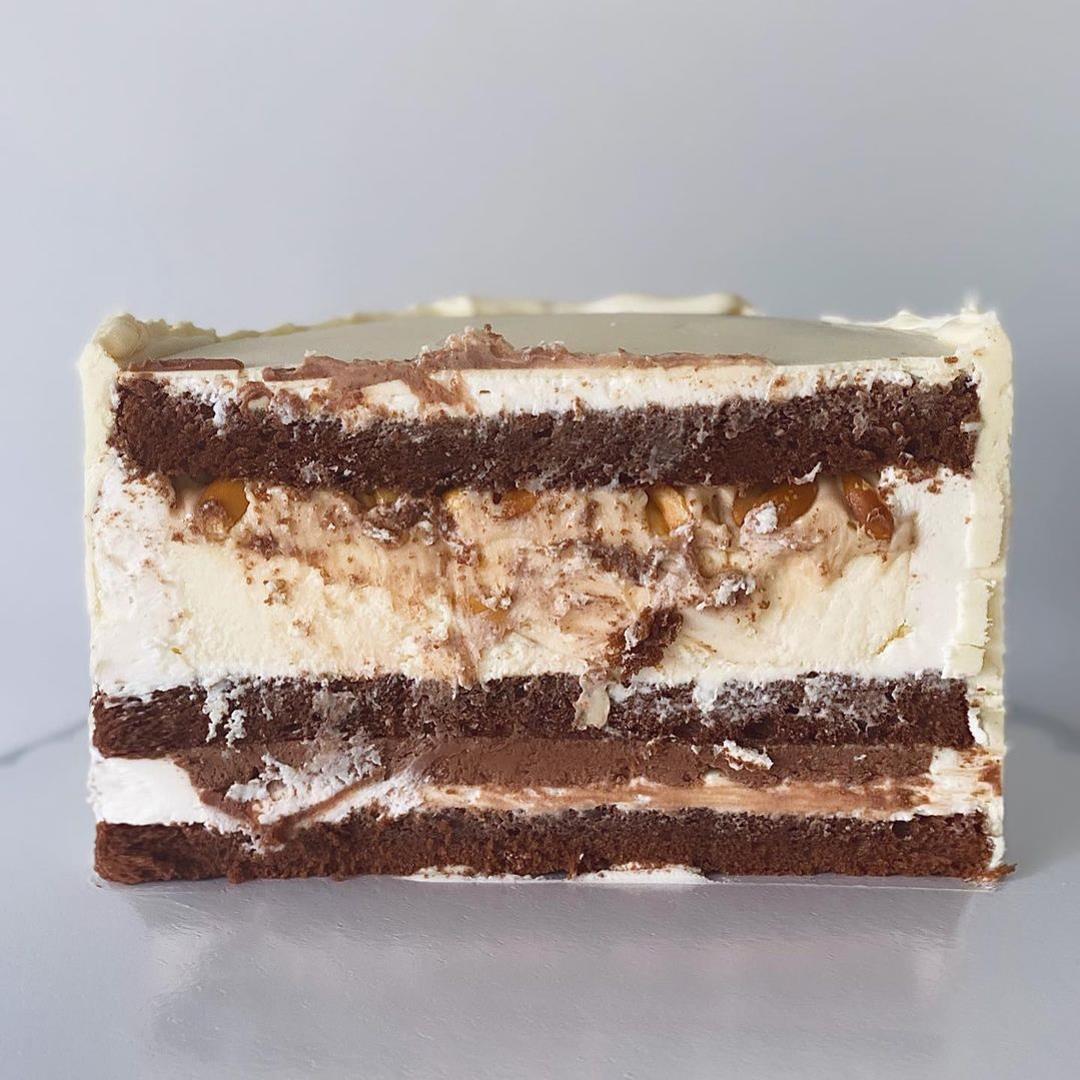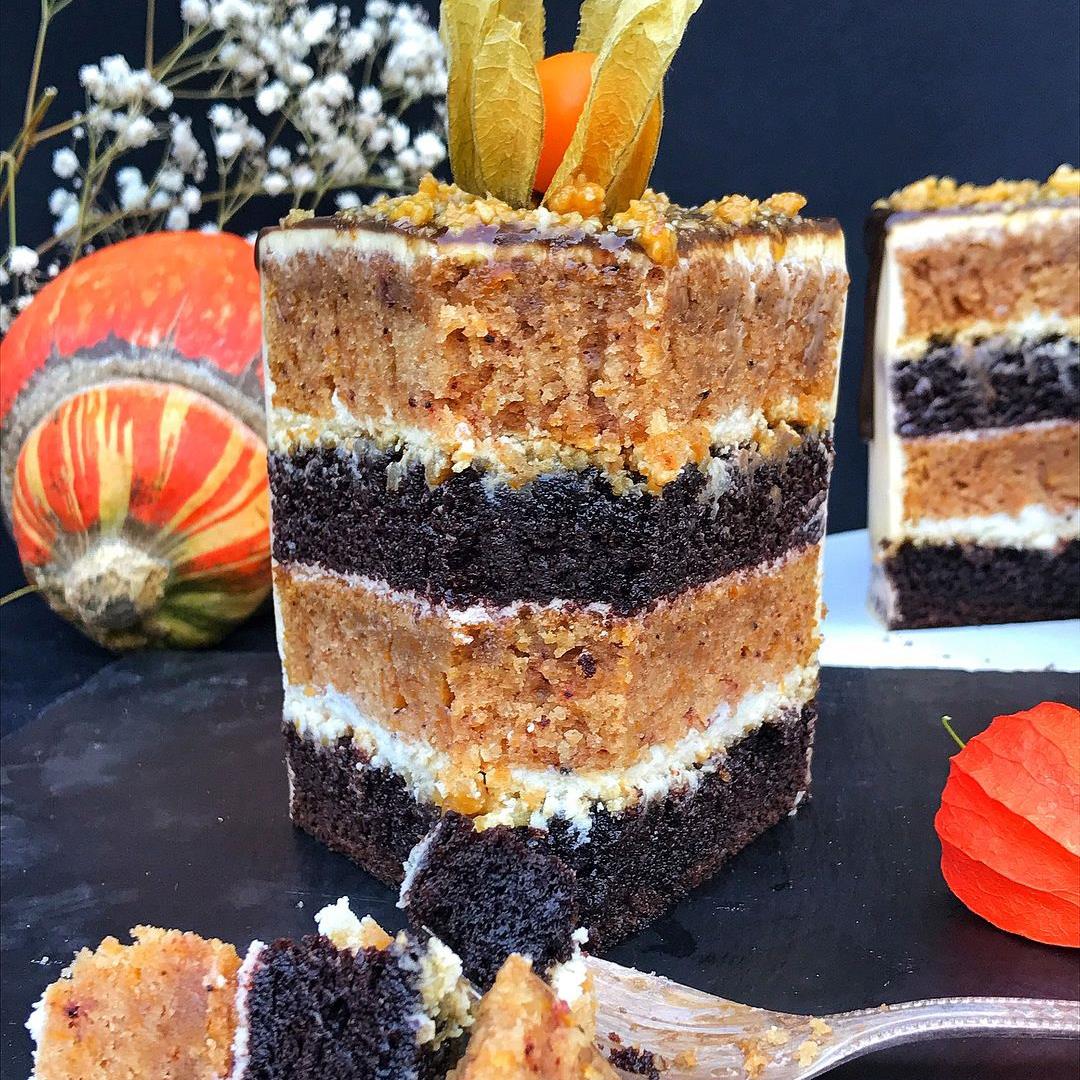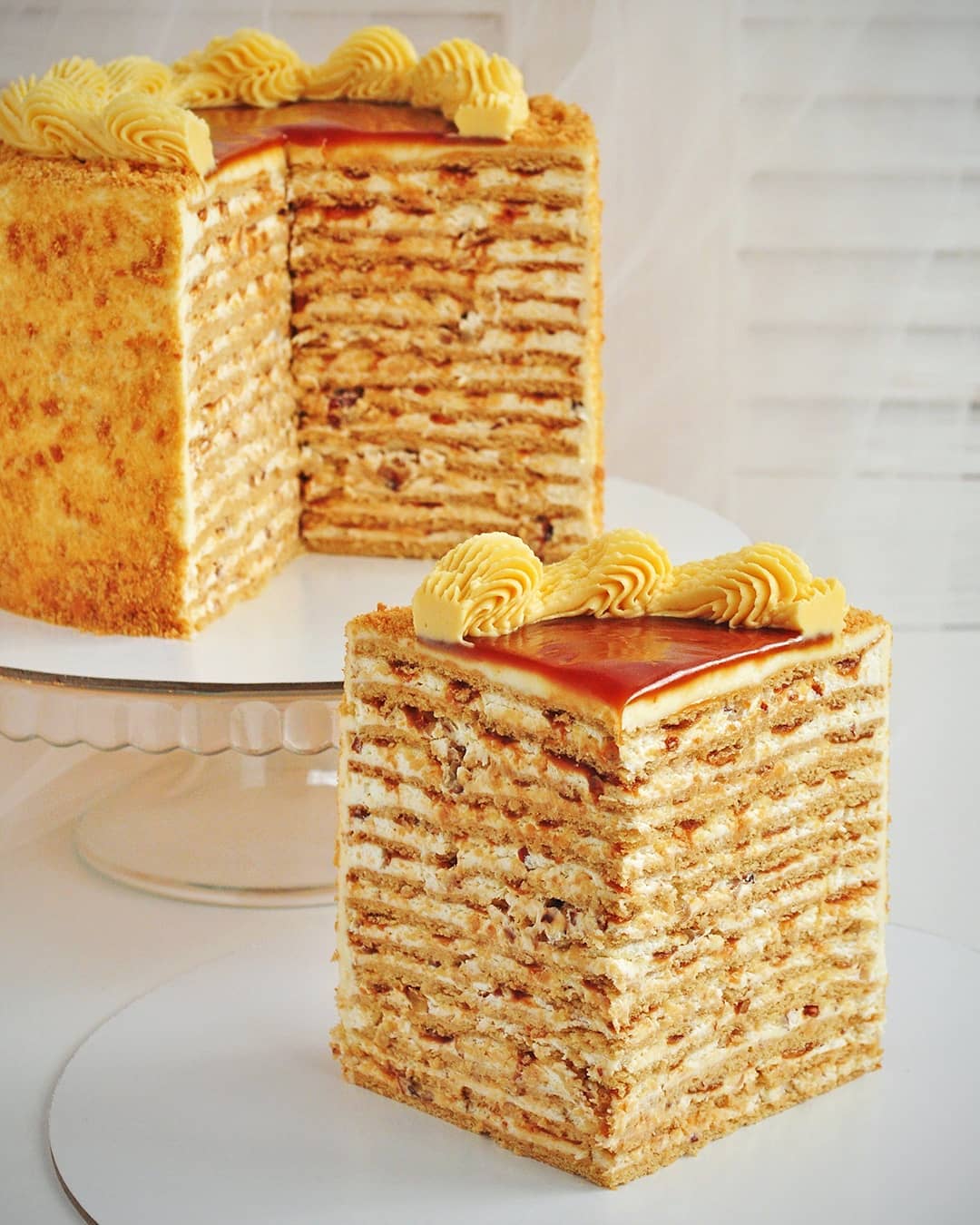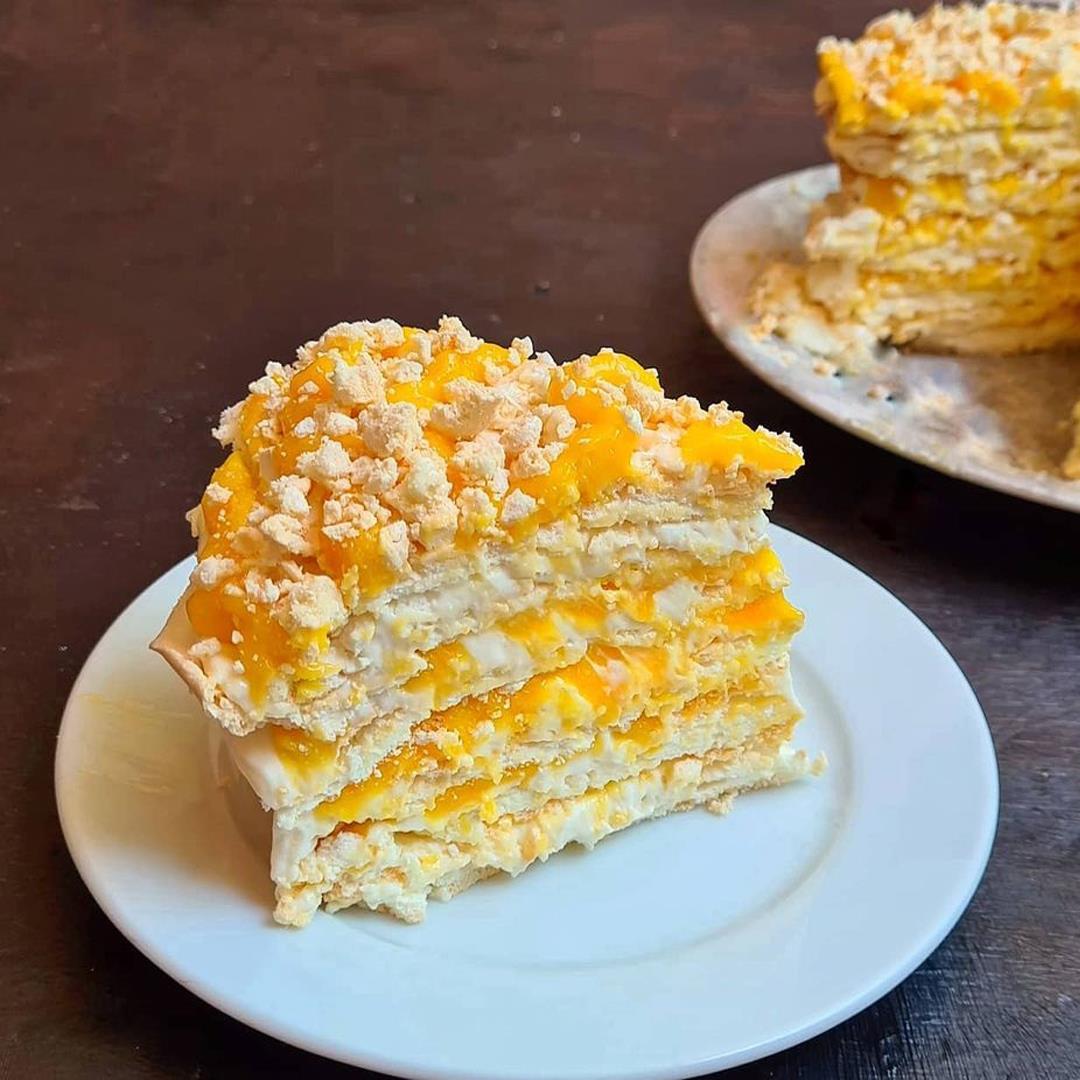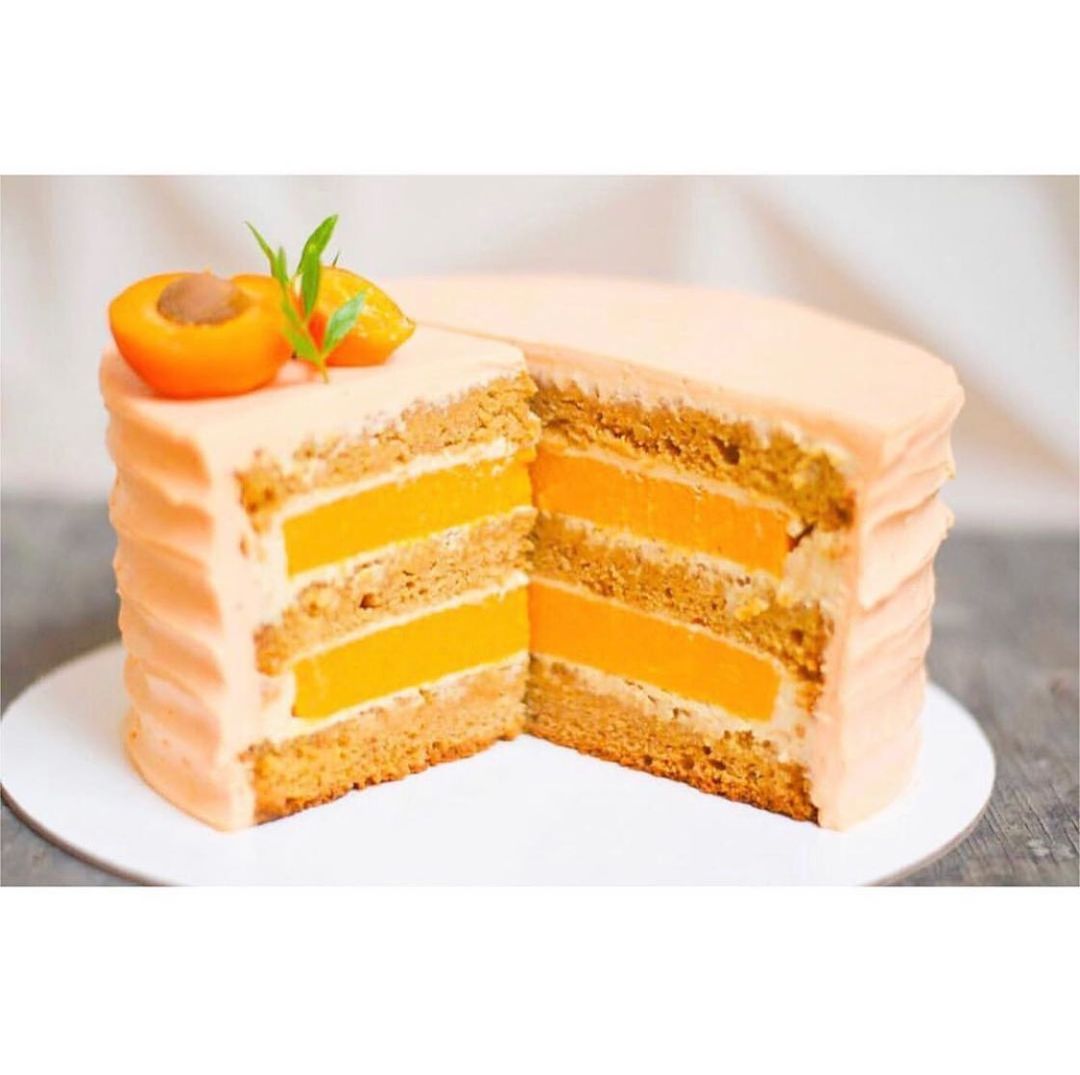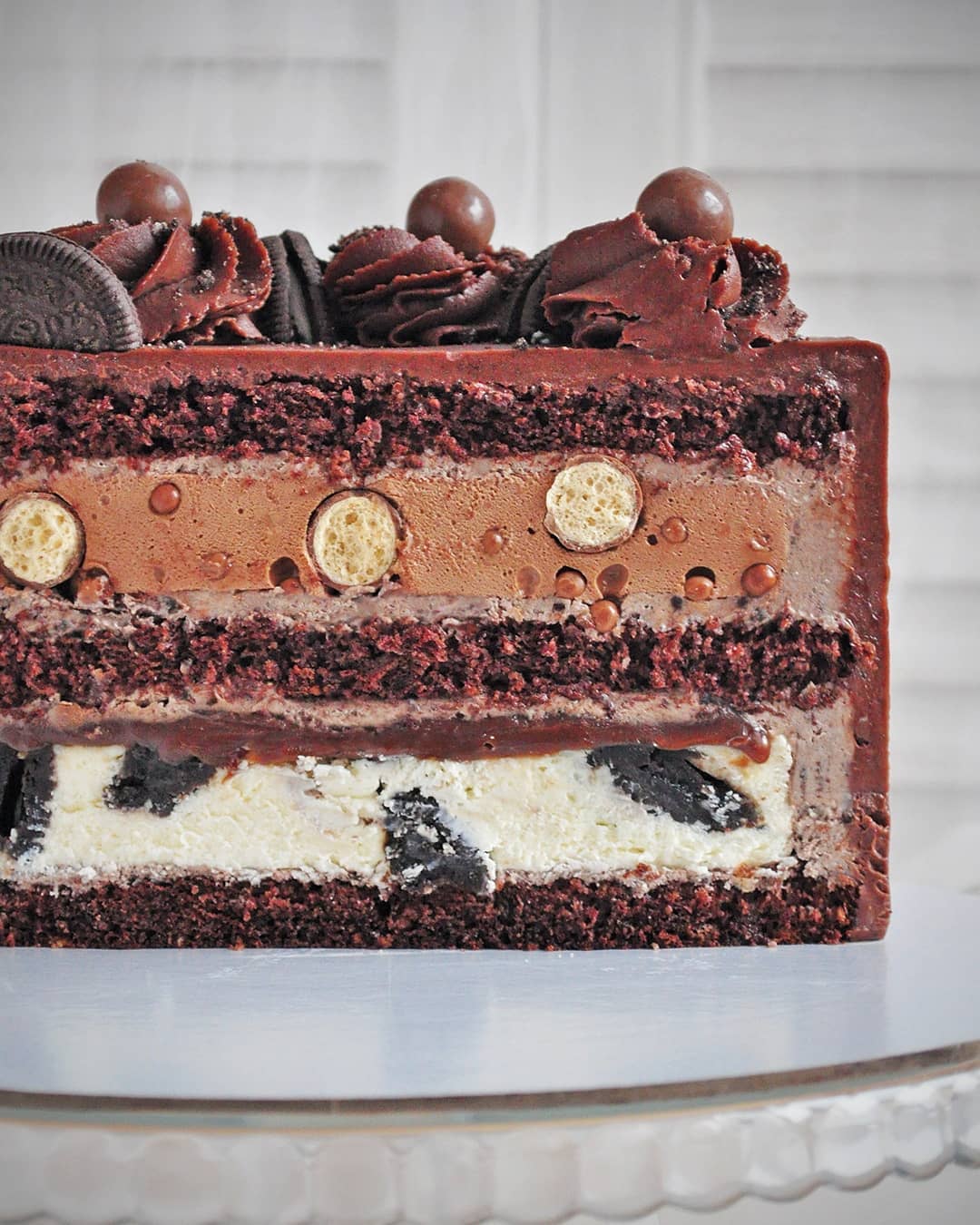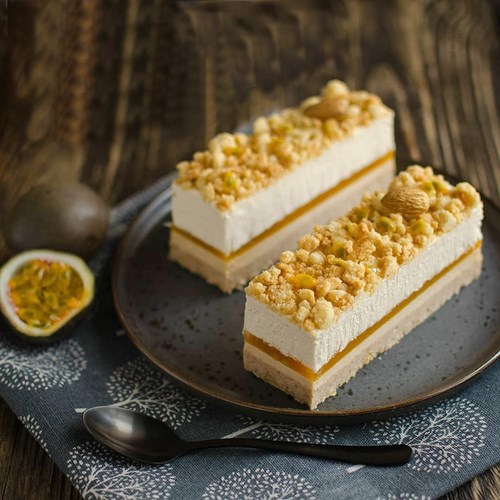Ingredients
Biscuit
Filling custard
Coating custard
Instructions
Step 1
Step 2
Step 3
Step 4
Step 5
Step 6
Step 7
Step 8
Step 9
Step 10
Step 11
Step 12
Servings
Equipment
A variety of sizes will help with separating dry and wet ingredients efficiently. Stainless steel bowls are durable and easy to clean.
A stand mixer or hand mixer is essential for whipping custards to the perfect fluffy consistency. Start slow to avoid splatter.
Use separate small molds for the biscuit layers to ensure even baking. Silicone molds can make release easier.
Wooden or metal skewers will help you check the readiness of your cakes without leaving large holes.
Necessary for melting gelatin quickly and efficiently. A microwave-safe bowl is a must!
Helps in assembling and stabilizing the cake. Adjustable molds can fit different cake sizes.
Variations
Faq
- How do I know when the cake is ready?
The cake is ready when a skewer inserted into the center comes out clean. Check it after 40 minutes if baking in a single mold.
- Can I use other fruit instead of currants?
Absolutely! Blueberries, raspberries, or strawberries make great substitutes if currants are not available.
- Why is my custard not setting properly?
Ensure the gelatin is fully dissolved before adding it to the cream mixture. If it's not warm enough, it won't set correctly.
- Can I prepare the cake in advance?
You can make the cake a day ahead and store it in the fridge. This actually helps the flavors to meld together beautifully.
- What tips do you have for achieving a smooth coating custard?
The key is soft butter and room-temperature cream cheese – this ensures a smooth blend without lumps.
- How can I make my cake layers more even?
Weigh your batter to ensure each layer has the same amount. Additionally, using a leveler or serrated knife helps in achieving even layers.

